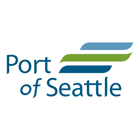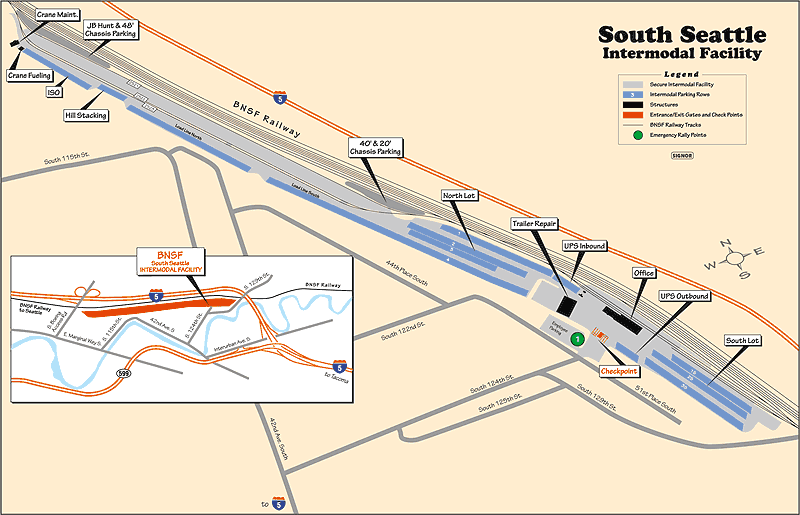
Currently, the Port of Seattle handles about 1 million containers or 2 million TEUs each year, making it the 7th largest port in the United States. While there are many train lines that carry containers to and from the port site, there is also a significant number of containers which are transported throughout the city via truck. Approximately eight miles south of the Port, the South Seattle Yard is an alternative holding site for containers waiting for transfer. Rather than having trucks navigate through the city to pick up and drop off containers, it would be much more energy efficient to move them via rail.
The proposed project includes the construction and operation of a small intermodal train that would transport containers from the port on the waterfront, to an inland facility at the South Seattle Yard. While some of the rail route is privately owned, the report suggests creating a public private partnership to manage the project.
The investigation into the benefits of this project suggested that it would achieve significant emissions reduction, though the fuel cost savings would be less significant. By shifting 100 freight containers per day from truck to train along this 8 mile stretch, CO2 emissions would decrease by 44%, keeping 466,235 lbs of carbon dioxide out of the air in Seattle. These emission reductions even take into consideration the additional emissions from the additional transfer of containers on and off of the train. The operation fuel savings would be just over $8,000 annually. The cost of completing this project would not be large considering that the rail lines already exist and the cost to run trains on this route is less expensive than trucks.
Savings Narrative:
By shifting containers from truck transportation to rail transportation during the first leg away from the Port of Seattle, the fuel usage and emissions from that portion of the freight transportation would decrease by 44%
